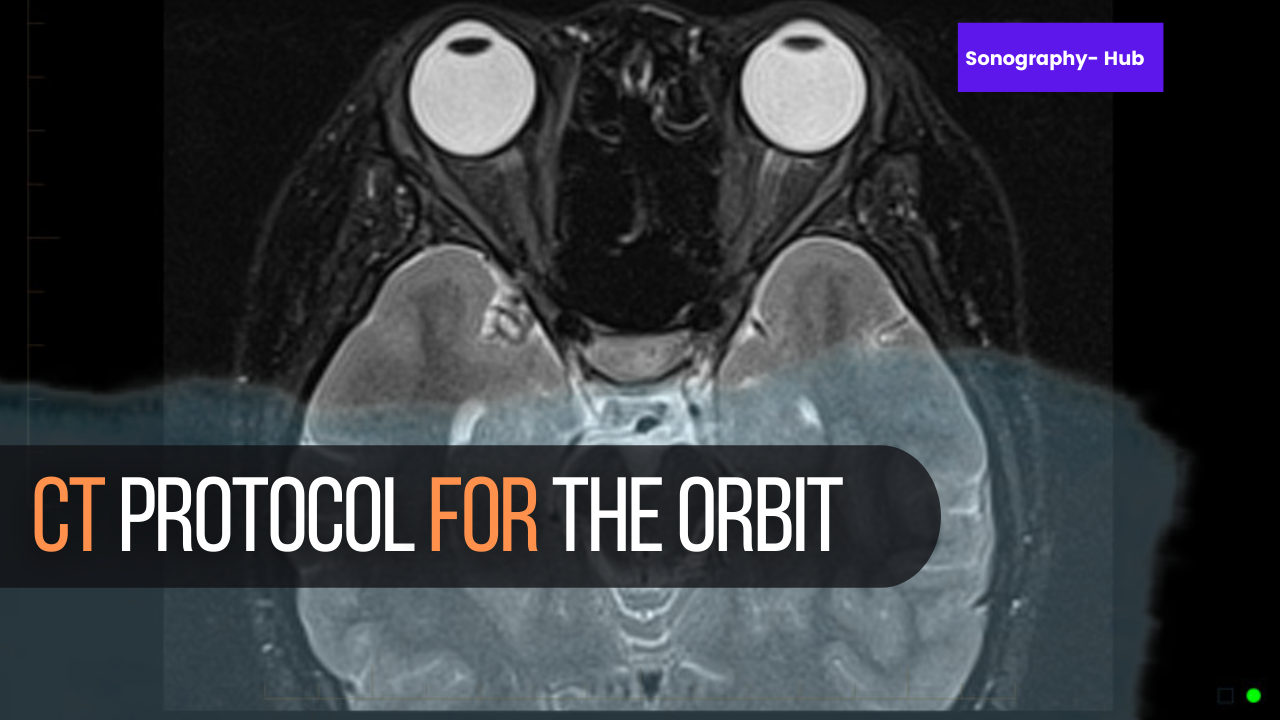 |
| CT Protocols- Beginners Tips |
Protocol for the Orbit
Indications
- Detections
- Exclusion or follow up of the orbital space-occupying lesions including tumors, abscesses, etc,
- and other inflammatory or infiltrative pathologies, trauma, etc.
- Assessment of intra and extraconal compartments.
Patient Positioning
- Prone with Head First, with extended neck and chin resting on the chin rest to scan in the Coronal Plane, or
- Supine with Head First to scan in the Axial Plane.
Topogram Position/Landmark
Lateral
- 2-3 cm anterior to the forehead in the prone position.
- Midforehead in the supine position.
Mode of Scanning
Helical
Scan Orientation
1. Posterior to anterior in the prone position.
2. Craniocaudal in the supine position.
_Start Location
- Level of the anterior margin of the foramen magnum in the prone position.
- Just above the orbital plates.
_End Location
- Tip of the nose in the prone position
- The floor of the orbit in the supine position.
Gantry Tilt
- As many degrees as required to make the scanning plane perpendicular to the bony palate in the prone position.
- No tilt in the supine position.
Field of View
Always includes the cavernous sinuses including the anterior ventral part of the brainstem.
Contrast Administration
Intravenous
Volume of Contrast
60-80 mL.
Rate of Injection of Contrast
2-3 mL/sec.
Scan Delay
30-40 sec.
Slice Interval in Reconstruction
1-3 mm.
Reconstruction Algorithm/Kernel
Medium smooth for soft tissues, sharp for the bony orbits.
3D-Reconstructions
MPR, MIP
Comments
- The neck should be extended as far as possible to minimize gantry tilt.
- Instruct the patient to close the eyes and maintain in the neutral position without movement during the period of scanning.
- Sagittal images should be in the plane parallel to the long axis of the orbit.
Criteria of Good Image Quality
- Symmetric position with the orbital plates overlapping with each other.
- Absence of the motion artefacts.
- Absence of beam hardening.
- Optimal opacification of the cavernous sinuses.
Related Topics

Post a Comment